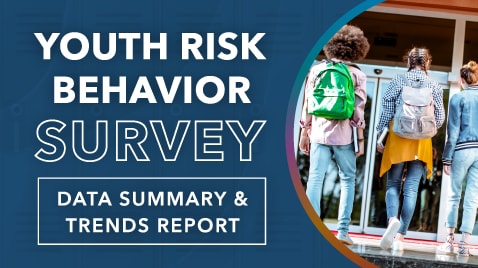Health Disparities

Health disparities are preventable differences in the burden of disease, injury, violence, or opportunities to achieve optimal health that are experienced by socially disadvantaged populations.1
Despite significant progress in research, practice, and policy, disparities in youth health risk behaviors persist. Populations can be defined by factors such as race or ethnicity, gender, education or income, disability, geographic location (e.g., rural or urban), or sexual orientation.
Health disparities are inequitable and are directly related to the historical and current unequal distribution of social, political, economic, and environmental resources.
Health disparities result from multiple factors, including
- Poverty
- Environmental threats
- Inadequate access to health care
- Individual and behavioral factors
- Educational inequalities
We can improve health risks and reduce disparities and inequities by addressing social determinants of health.
The Education–Health Disparities Link
Health disparities are related to inequities in education. Dropping out of school is associated with multiple social and health problems.2-3 Overall, individuals with less education are more likely to experience a number of health risks, such as obesity, substance abuse, and intentional and unintentional injury, compared with individuals with more education.4 Higher levels of education are associated with a longer life and an increased likelihood of obtaining or understanding basic health information and services needed to make appropriate health decisions.5-7
At the same time, good health is associated with academic success. Higher levels of protective health behaviors and lower levels of health risk behaviors are been associated with higher academic grades among high school students.8

Health risks such as teenage pregnancy, poor dietary choices, inadequate physical activity, physical and emotional abuse, substance abuse, and gang involvement have a significant impact on how well students perform in school.9-13
Addressing Adolescent Health Disparities
LGBTQ+ Youth Face Mental Health Challenges
The mental health of LGBTQ+ youth is worsening.
The Youth Risk Behavior Data Summary & Trends Report: 2011- 2021 brought into clear focus the level of distress many youth are experiencing. Of serious concern is that LGBQ+ youth are experiencing especially high rates of poor mental health.
Schools are a vital lifeline to help students struggling with their mental health. Research has shown that when youth feel connected, they do better not just in adolescence, but into adulthood. When schools focus on creating safe and supportive environments that support LGBQ+ youth, all youth have improved mental health outcomes.
When schools implement CDC’s What Works In Schools program, we see improvements in student mental health.

In 2021, CDC found that—
- 69% of LGBQ+ students experienced persistent feelings of sadness or hopelessness.
- 45% of LGBQ+ students seriously considered attempting suicide.
These percentages are higher than those of their heterosexual peers.
The What Works In Schools program supports schools in creating safer and more supportive environments that protect student mental health, while also supporting quality health education and connecting students to needed health services.
Resources
- CDC. Community Health and Program Services (CHAPS): Health Disparities Among Racial/Ethnic Populations. Atlanta: U.S. Department of Health and Human Services; 2008
- McCarty C, Mason W, Kosterman R, Hawkins J, Lengua L, McCauley E. Adolescent school failure predicts later depression among girls. Journal of Adolescent Health 2008;43:180–187.
- Ellickson P, Saner H, McGuigan K. Profiles of violent youth: substance use and concurrent problems. American Journal of Public Health 1997;87(6):985–991.4
- U.S. Department of Health and Human Services. Healthy People 2010 Objectives: Educational and Community Based Programs; 2000.
- Liao Y, McGee D, Kaufman J, Cao G, Cooper R. Socioeconomic status and morbidity in the last years of life. American Journal of Public Health 1999;89(4):569–572.
- Jemal A, Thun M, Ward E, Henley J, Cokkinides V, Murray T. Mortality from leading causes by education and race in the United States, 2001. American Journal of Preventive Medicine 2008;34(1):1–8.e7.
- Breese P, Burman W, Goldberg S, Weis S. Education level, primary language, and comprehension of the informed consent process. Journal of Empirical Research on Human Research Ethics 2007;2(4):69–79.
- Rasberry CN, Tiu GF, Kann L, McManus T, Michael SL, Merlo CL, Lee SM, Bohm MK, Annor F, Ethier K. Health-related behaviors and academic achievement among high school students—United States, 2015. MMWR Morb Mortal Wkly Rep 2917;66:922-927.
- Choi Y. Academic achievement and problem behaviors among Asian Pacific Islander American adolescents. Journal of Youth Adolescence 2007;(36)4:403–415.
- Stuart S, Sachs M, Lidicker J, Brett S, Wright A, Libonati J. Decreased scholastic achievement in overweight middle school students. Obesity 2008;16(7):1535–1538.
- Valois RF, MacDonald JM, Bretous L, Fischer MA, Drane JW. Risk factors and behaviors associated with adolescent violence and aggression. American Journal of Health Behavior 2002;26(6):454–464.
- Chomitz V, Slining M, McGowan R, Mitchell S, Dawson G, Hacker K. Is there a relationship between physical fitness and academic achievement? Positive results from public school children in the Northeastern United States. Journal of School Health 2009;79(1):30-37.
- Field T, Diego M, Sanders CE. Exercise is positively related to adolescents’ relationships and academics. Adolescence 2001;36(141):105-110.